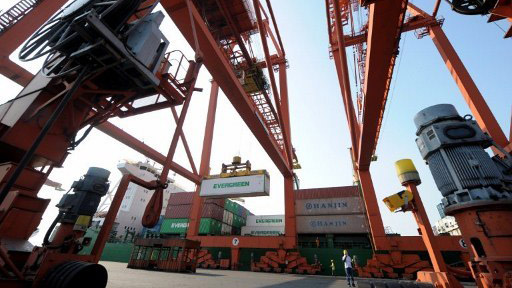SUMMARY
This is AI generated summarization, which may have errors. For context, always refer to the full article.

MANILA, Philippines – The national government and other stakeholders are slated to begin crafting an environmentally friendly freight program in 2013 to reduce pollution and introduce new ways to cut costs of logistics in the Philippines.
At the Asian Development Bank (ADB) Transport Forum on November 8, Clean Air Initiative (CAI) for Asian Cities Center said green freight is a fairly new concept in the region but is slowly becoming popular with Asian governments.
Some of the Asian countries that already have put in place a green freight program include Thailand, China, Vietnam, and Lao PDR. CAI-Asia said discussions on a green freight program are also ongoing in India while the government of Indonesia announced they will do the same in October.
“Green freight is coming to the Philippines by next year. Indonesia last month announced that they are going for a green freight program. It’s in partnership with the government, private sector, civil society organizations (CSOs),” CAI-Asia Technical Manager for Transportation Sudhir Gota said.
What is green freight?
Sophie Punte of CAI-Asia explained green freight covers freight via air, water, and land.
This involves transporting goods using less fuel, less carbon dioxide, less air pollution, as well as safer and more cost efficient means.
Punte said it is important that all freight sectors across the globe, not only in Asia, adopt a green freight program. She said this will help promote sustainable practices which will define the future of economic growth in countries.
“The freight sector is a very important sector of the economy. in Europe and the US, its about 10 to 15% of GDP. in a country like Indonesia, its 27% meaning that the moment the sector is left behind in investments, development, and modernization, you find that this sector becomes the bottleneck for future economic growth,” Punte said.
Creating a program
Stephan Schablinski of the Logistics Institute – Asia Pacific said reverting to green freight has become imperative given the rapid increase in air pollution. He said that air pollution worldwide increased by 50% since 1990 or in just 20 years.
But crafting a green freight program has no singular approach. For most part, it involves national governments adopting some form of grading system and incentives to allow the private sector to get the green technologies they need or conduct trainings for personnel to handle goods better.
In some countries, like the United States, implement a branding system where products shipped through green freight are branded accordingly. One of these products is Hewlett Packard printers which will start using their ‘smart’ branding.
In other countries, companies and products are graded according to how “green” they are using a ‘leaf’ system where the more leaves you get, the greener your company or product is. – Rappler.com
Add a comment
How does this make you feel?
There are no comments yet. Add your comment to start the conversation.